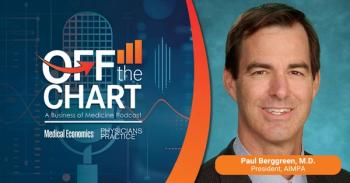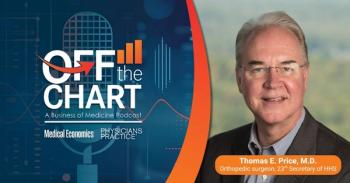
Healthcare Providers Play Crucial Role in Helping Victims of Abuse
I would urge each and every one of you to be familiar with the warning signs of abuse, and the resources available to you all as healthcare providers.
All of us who have any contact with children in our practices are all too familiar with child neglect and abuse, especially those of us who have practiced for a long time.
Nationwide, nearly one percent of our children are victims of neglect and abuse. Spread nearly equally among gender, 88 percent of victims were comprised of three races or ethnicities: African-American at 21.9 percent; Hispanic at 21.4 percent; and Caucasian at 44.8 percent.
According to
So there is significant data that makes it nearly a certainty that most medical providers will encounter a child victim of neglect or abuse in their careers. Unfortunately, it will likely be encountered several times.
This past week I had a close encounter with this problem that disturbed me to my core. A three-year-old patient arrived at the emergency department without a pulse and lifeless from multiple trauma secondary to a beating, and this child had been admitted, treated, and discharged from our care a couple of weeks earlier.
There were red flags at the initial admission to our unit. The medical and nursing staff acted them upon immediately, and the proper authorities were formally notified.
We cooperated with the local child protective agency, and were able to heal and discharge the patient. This case was considered “low risk” by child protective services and our in-house social services was working with the family, so I felt confident that we had discharged our duty as to putting the health, safety, and well-being of our patients as the highest priority.
That was until our patient was pronounced dead a short time later from multiple blunt trauma and internal injuries.
Almost 45 percent of patients we admit to our burn unit are children. A small percentage of those children are victims of abuse and neglect, so we are all highly suspicious and vigilant in protecting our pediatric patients. Thankfully, most of the parents we deal with from a child-protective standpoint are neglectful, but not intentionally abusive. Children can be burned quickly by caregiver’s carelessness or simply by accidents that happen as we grow up.
Yet experiences like this cause me to carefully examine my actions in my professional role, and dissect everything about this case to see if there was something missed, or if we could have done one more thing to protect this child. I’m a parent and a grandparent, and these experiences hit a little closer to home for me and are deeply distressing.
Child protective services faces severe staff and funding shortages in all states, and are overwhelmed with this caseload. It is a pervasive problem that is difficult to manage given the budget realities of most federal, state, and local jurisdictions.
I would urge each and every one of you to be familiar with the warning signs of abuse, and the resources available to you all as healthcare providers. A good place to start is the
Federal and state laws are fairly consistent in the area, with some differences as to what constitutes abuse. Mandatory reporters include healthcare providers such as myself, and I take that role seriously. Generally speaking, a report must be made when an individual knows or has reasonable cause to believe or suspect that a child has been subjected to abuse or neglect.
It has been a sad week at the unit as we look at the pictures of this poor child, follow the news of this case, and dissect our own actions and policies. We will move on and continue to do everything we can to protect all of our defenseless patients to the best of our ability, but the realities of life will not make this any easier. As a society, we also need to raise the priority for child protection, and make sure that our communities have the all resources that they need to protect the most vulnerable among us - our children. A child’s life may depend on it.
Find out more about Stephen Hanson and our other
This blog was provided in partnership with the American Academy of Physician Assistants. For more information, visit
Newsletter
Optimize your practice with the Physicians Practice newsletter, offering management pearls, leadership tips, and business strategies tailored for practice administrators and physicians of any specialty.




